|
Memories from the Danton Burroughs
|
|
Memories from the Danton Burroughs
|
BURROUGHS GENEALOGICAL NOTES
from
MEMOIRS OF A WAR BRIDE
By Mary Evaline Burroughs
(Mother of Edgar Rice Burroughs)
![]()
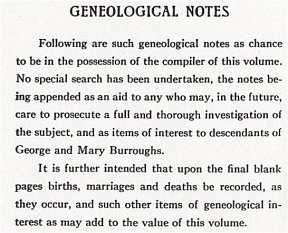
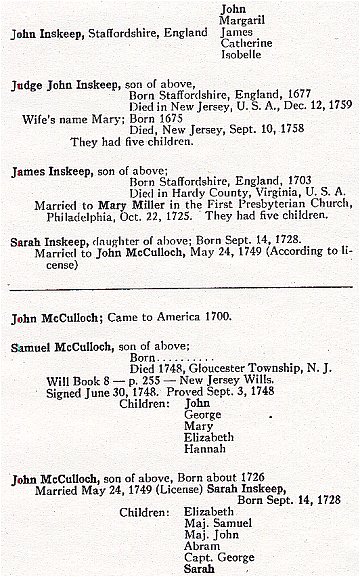
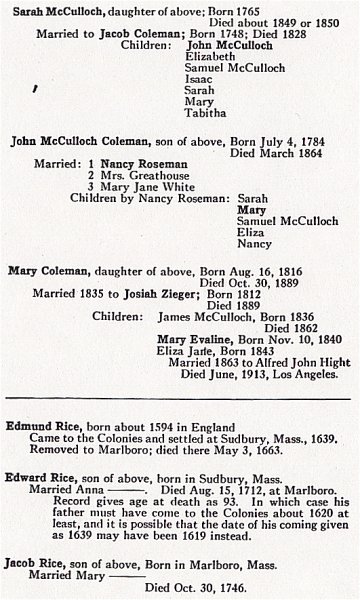
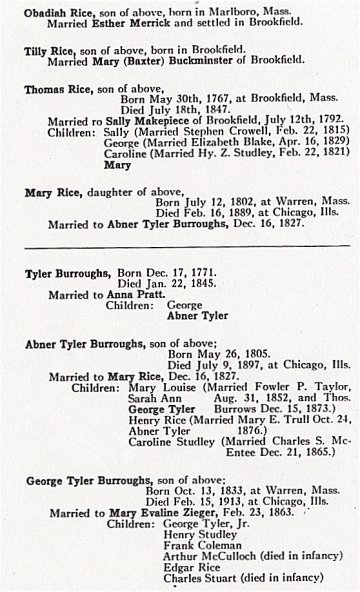
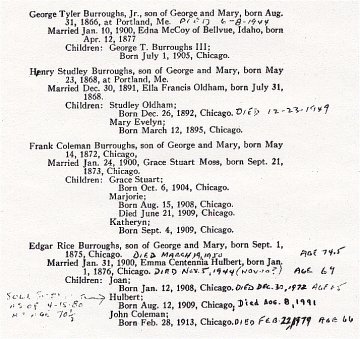
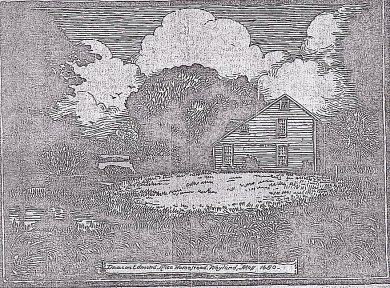
Far-raching interest attaches to a pen-and-ink drawing by Pauline Atlee Long, reproduced above, which has for subject the Deacon Edmund Rice homestead, built in Wayland, Mass., in 1650. Deacon Rice was a Pilgrim, born in Buckinghamshire, Eng. in 1594. He settled in Sudbury, Mass., in 1638, according to a tablet that has been erected near the site of the house pictured above.This tablet was appointed to apportion land in 1639, and became a Deputy to the General Court, a magistrate in 1641, and a selectman in 1644, and some years following. He was one of the petitioners in 1656 for the incorporation of Marlborough, where he passed away in 1663.
The genealogical records of the Rice family have been traced back for 33 generations, and its history has been written by Charles Elmer Rice, president of the Union Theological Seminary of Alliance, O. President Coolidge is descended from Martha granddaughter of Deacon Edmund Rice. The ancestry of Mary Baker Eddy, Discoverer and Founder of Christian Science, has been traced back to Deacon Rice's second son, Edward.
Other famous men and women in the Rice lineage were Clara Barton, Harriet Hosmer, Mary A. Rice Livermore, Julia Ward Howe, Harriet Beecher Stowe and Samuel F.B. Morse. According to the records, in 1858 this family numbered 1400 families and 7000 individuals.
In "The Hudson Thompson Memorial," a book by Lillian Kimball Stewart, published in 1914, in a chapter on Edmund Rice, the following appears:
"In a leas still preserved are these specifications for a house to be built by Edmund Rice prior to 1655. The house was to be 30 foot long, 10 foot high, 1 foot sill from the ground, 16 feet wide with two rooms, both below or one above the other , all the doors, walls, and stairs with convenient fixtures and well planked underfoot and boarded sufficiently to lay corn in the story above-head."
In the "History of Sudbury," by A.S. Hudson, are the following passages:
"Mr. Rice was a prominent man in the settlement. He early owned lands in and out of the town, some of which came by grand of the General Court. His first dwelling-place at Sudbury was on the old North Street. September 1, 1642, he sold this place to John More, and Sept. 13 of the same year leased for six years the Dunster Farm, which lay just east of Cochituate Pond. He bought of the widow Axdell six acres of land and her dwelling-house, which were in the south part of the town, and some years afterward he bought of Philemon Whale his house and nine acres of land near 'the spring' and adjacent to the Axdell place; and these taken together, in part at least formed the old Rice homestead not far from the 'Five Paths' (in Wayland).
"This old homestead remained in the Rice family for generations. Edmund sold it to his son, Edmund, who passed it to his sons, John and Edmund, and afterward John transferred his share of it to his brother Edmund -- by whom it passed to other members of the family, who occupied it till within the last half century.
"Before the plantation of Sudbury was commenced there passed through the southeasterly corner of its territory a memorable trail. This was part of the 'Old Connecticut Path.' This highway extended from the seaboard settlements far into the interior. From Watertown it passed through what is now Waltham and Weston to that section of Sudbury now Wayland; from thence south-westerly to the north side of Cochituate Pond, and on through the wilderness toward Connecticut. It is, we believe, the road now traveled from Weston Corner by 'Five Paths' Wayland to Framingham mention is made of this way in the town recording as early as 1643 and again in 1648.
"Where it passed through the town it was called 'the road from Watertown to Dunster Farm,' a tract of 600 acres granted 1640 to President Dunster of Harvard College, bounded on the west by Cochituate Pond and early leased by Edmund Rice of Sudbury. This trail was first made known to the English by some Nipnet Indians who came to Boston bringing corn at ta time when there was a scarcity of it in the colony.
"Over this path the settlers went who founded Weathersfield, Conn. This path is now supplied every few miles by markers -- stating it to be the Old Connecticut Path."
|
TRIBUTE SITE CONTENTS |
TRIBUTE SITE CONTENTS |
